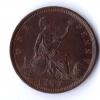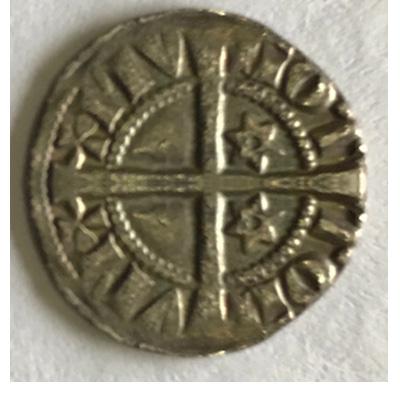-
Posts
1,801 -
Joined
-
Last visited
-
Days Won
110
Content Type
Profiles
Forums
Events
Downloads
Store
Gallery
Articles
Everything posted by jelida
-
VICTOEIA? Looks good to me, though I know nothing about farthings. Jerry
-
Well done, the description has changed, now just “unresearched variety”. Jerry
-

So, Brexit....What's happening?
jelida replied to azda's topic in Nothing whatsoever to do with coins area!
It’s “Stab it with their steely knives, but they just can’t kill the beast”.........the “check out any time....’ quote above is correct, and very appropriate in that the EU will do everything it can to make leaving difficult, understandable self preservation but change will be driven from within over time due to both external and internal factors. Quite frankly we are better off in the long term ploughing our own furrow. I am amazed how the predominant political arguments seem to centre on wealth, income , future affluence or otherwise when the issues of democracy and self determination are so much more important. We are so lucky to be able to argue our case in a peaceful fashion, one has only to look around the globe where populations have lost tens or hundreds of thousands of lives often unsuccessfully fighting for basic democracy and freedom from tyranny and external control. They never seem to so willing to die for the pound in their pocket. Jerry -
While we’re on books............🤫 https://www.amazon.co.uk/Story-Brexit-Ladybirds-Grown-Ups/dp/024138656X/ref=sr_1_1?ie=UTF8&qid=1543924032&sr=8-1&keywords=Brexit Jerry
-
Reported, and vendor messaged. Coins are not their thing, they may just be in ignorance . Jerry
-
I agree, astounding! I have sent the vendor a further message , awaiting reply. I have reported it and would encourage others to do likewise. Jerry
-
I sent him a polite message too, after reading this. No reply, but it looks as though the weight of criticism has come to bear and he has pulled the coin. Jerry
-
Thanks Stu, I’m glad someone was prepared to follow-up my post and I certainly agree regarding eye appeal. Not known to many on this forum, but I do also collect some hammered (over a hundred Henry III and fifty odd Lizzie I pennies, and probably into 3 figs of other issues and denominations including a few gold as well as detector finds in the hundreds) and am used to seeing “VF for issue” and “weak areas as struck” type comments in the catalogues. My point being that particularly for certain issues (for example from say William II until Henry II post Tealby) wear is often considered seperately from strike, which is how it should be. This does not mean that the desirability is not adversely affected by poor strike especially where cleanly struck coins are freely available, but that features such as poor strike, splits and cracks, perforations and plugs etc merit separate comment to wear, a bit like the ‘details’ comments on slabbed coins. I have yet to see a grading system where points are deducted for percentage of poor strike, filled or worn die, poorly centred flan etc though that is not to say one does not exist. It seems logical to me (though I accept I may be in isolation) that if the cleanly struck parts of the op’s coin grade NVF, then so must the coin as a whole - the coin appears flat, limiting differential wear- in that the poorly struck parts are also almost certainly unworn, and this is where the other descriptors that determine desirability come in. I stick by my original comment, that this coin is better than fine, but with non wear related issues. Jerry
-
Looks like HENRIC DI GRA REX ANG to me. Jerry
-

Penny Acquisition of the week
jelida replied to Paulus's topic in British Coin Related Discussions & Enquiries
-

Penny Acquisition of the week
jelida replied to Paulus's topic in British Coin Related Discussions & Enquiries
A couple of Ebay finds from last week, both from the same vendor! The F763 was £29.95 and the 1861 Gouby G was £4.95. The latter would be an addition to Richard's 'Rarest Pennies' site. There appear to be at least three 1861 Gouby G die pairings on the site, this coin matching a couple of the other listed coins. Whether the actual staging of Gouby G can be determined is doubtful due to wear. While referencing the 'Rarest Pennies' site, where has the F38 gone? Too many of them? I did spot an unrecognised F763 at the Midland Coin Fair last weekend, but only about VG so I left it as it was from the same pair of dies as mine. Jerry -
Obviously I have to bow to superior knowledge here, but I remain puzzled. I had thought that the strike of a coin was in essence an additional factor in overall desirability of a coin to the grading, and that grade was a reflection of the 'wear and tear' the struck coin had received in circulation, and on that basis I consider it relatively unworn. To illustrate this I have prepared a fantasy coin from the well struck section of the reverse of this one. I would grade this compilation as at least good fine for wear, anticipating it might even be a little better in the hand. Where did I go wrong? Jerry
-
I wish I’d paid more attention to the obverse type. From the pics the LCA specimen does look other than Freeman 4, the problem being the low grade of the coin. Although there is the small blobby protrusion under the leg of the R on both this coin and Gouby’s, it doesn’t seem to me under high magnification to be a definitive overstrike, though of course possible; all I can say is that the appearance of the R matches Gouby’s. Until a high grade coin turns up I will be a little doubtful that this overstrike actually exists, and possibly even then. Jerry
-
Had a close look at some of the pennies today, it is my opinion that the F10 E over P is just a complex die flaw. The R over B in REG is probably OK and the die number 2 is nice. Nothing for me to spend my increasingly stretched resources on this time though. Jerry
-
I would grade well above fine, perhaps near VF but slightly impaired by the areas of weak strike. Nice coin. Jerry
-
Thanks Pete. I cant say I’m that impressed with the supposed obverse 10 E over P from the photos; has anyone actually seen it in the flesh? Looks like a die crack in the images. Lovely 1863 die number 2, way out of my league. Will try and view them at the Midland. Jerry
-

How to deal with sticky coins?
jelida replied to Ozzy1977's topic in British Coin Related Discussions & Enquiries
Excellent, the instructions are online, the key is time and repeated prodding of the verd with sharpened cocktail stick or similar. I have left a bead of Verdicare on the coin overnight without detriment and it doesn’t affect lustre or colour. The instructions do suggest leaving a protective film over the coin, I don’t do this, just dab the coin with water or acetone when I have finished. It works slowly but is very controllable. Use all the magnification you can for precise prodding. Do not use on proof coins. Jerry -

How to deal with sticky coins?
jelida replied to Ozzy1977's topic in British Coin Related Discussions & Enquiries
Hmm, I got mine mail order from the USA, wasn’t cheap but I don’t remember it being extortionate. You really only need a few drops for local treatment, I will look around for a suitable container; or entrust me with the coin and I’ll see what I can do! 🧐. Jerry -

How to deal with sticky coins?
jelida replied to Ozzy1977's topic in British Coin Related Discussions & Enquiries
If it were me, that would be a candidate for Verdicare, but looks very superficial so try a dab of acetone first. Jerry -

How to deal with sticky coins?
jelida replied to Ozzy1977's topic in British Coin Related Discussions & Enquiries
Any chance of a photo, Peckris? For localised verdigris I have found Verdicare very useful, to the extent of full removal, but it does require time for the drop applied to the verd to soften it, and mechanical prodding eg cocktail stick to remove it, and may need repeat application over a few days. As stated before high magnification and a steady hand are appropriate. Next time I tackle one I will try and take photos. Jerry -

Coin identification
jelida replied to Croggy's topic in British Coin Related Discussions & Enquiries
Well done! A little earlier than my guesstimate, a nice find! I actually like these, though I don’t collect them I do find them occasionally. They can be bought quite cheaply at coin fairs and on the net, and have some very pleasing designs. Jerry- 4 replies
-
- heraldry
- identification
-
(and 1 more)
Tagged with:
-

Coin identification
jelida replied to Croggy's topic in British Coin Related Discussions & Enquiries
It is a Continental Jetton, probably sixteenth to seventeenth century and probably from the Low Countries. There are many varieties, have a google. Jerry- 4 replies
-
- 1
-

-
- heraldry
- identification
-
(and 1 more)
Tagged with:
-

How to deal with sticky coins?
jelida replied to Ozzy1977's topic in British Coin Related Discussions & Enquiries
One would have to exclude oxygen during the soaking process or the oxidation of the oil will happen. Of course the acidic effect on the coin is what gently removes the patina and initially can make it appear nicer. The difficulty is removing the olive oil fully afterwards, impossible if a heavily patinated coin has had a prolonged soak. There are academic articles on this that I have read in the deep past but I can’t remember where. Perhaps in a conservation publication. Jerry -

How to deal with sticky coins?
jelida replied to Ozzy1977's topic in British Coin Related Discussions & Enquiries
Thankfully very inert, at least as far as metals are concerned, I’d even use it in my cars! The copper alloy parts in my 60 year old Landrover carburettor remain pristine, if a little worn. Any worries of even long term coin damage are misplaced, and this applies to most of the easily available organic solvents, though as stated above I always use a precautionary 100% acetone wash as a final step. Olive oil, widely used apparently on coins, is far worse as it oxidises into an acidic compound which does have damage potential. And the waxes and oils that accumulate around the details of handled coins likewise are sources of the salts that initiate and maintain verdigris, letting those deposits remain is itself a long term risk, and the main reason for the development of verd for example on slabbed coins. Jerry -
Interesting that the Hadrian is a plated coin, probably though not always I understand a contemporary forgery. The original coin is indeed a denarius, it looks largely to have corroded to horn silver. Nice finds. I haven’t had a denarius for several years, but did find a superb siliqua of Magnentius on a club rally in 2017. Jerry


